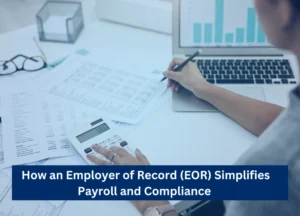The last 24 months have changed everything, for businesses, for leaders, for employees. The change was forced, extreme, reactive. But out of all this disruptive change came something incredible. We learned to work in an entirely different way. Current trends show that now we are no longer bound to traditional notions of space and time to work together.
We suddenly shifted to remote work: moved to hybrid work — a blended model where some employees return to the workplace and others continue to work from home.
Remote work has created new job opportunities for some, offered more family time, and provided options for whether or when to commute. But there are also challenges ahead. Teams have become more compartmented this year and digital exhaustion is a real and unsustainable threat.
Will the hybrid approach work? And is this really the future of work?
Business leaders can rewire their operating model for a successful shift to hybrid work with these five strategies.
1. Flexibility
Flexibility isn’t just about where people work. Employers that aren’t able to offer remote work options should evaluate how they can offer workers flexibility in other ways like schedule flexibility.
Think about different shifts, more family-friendly shifts, the ability to swap a shift, trade shifts with colleagues, and provide options to increase or decrease shifts based on specific needs without a big hullabaloo.
Every organization will need a plan that encompasses policy, physical space, and technology. It starts with answering critical questions: Understand what jobs and what people are truly remote-able? How are people doing and what do they need? Who will be able to work remotely, and who might have to come in? How often? Codify the answers to these questions, formulate a plan to empower people for extreme flexibility, and then guide employees as you experiment and learn.
2. Invest in space and technology to bridge the physical and digital worlds
Office space no longer stops at the office. Leaders must consider how to equip all workers with the tools they need to contribute — whether they’re working from home, the manufacturing floor, in the office, or on the go. Physical office space must be compelling enough to entice workers to commute in and include a mix of collaboration and focus areas. Meeting rooms and team culture will need to evolve to ensure all voices are heard.
3. Combat digital exhaustion
As we look to create a better future of work, addressing digital exhaustion must be a priority for leaders everywhere. It won’t be easy, but consider reducing employee workloads, embracing a balance of synchronous and asynchronous collaboration, and creating a culture where breaks are encouraged and respected.
4. Prioritize rebuilding social capital and culture
Organizations offering a combination of in-person and remote employees will also have a larger talent pool to work with, as they will no longer be confined to hiring employees in specific geographical regions. Broadening our networks and building social capital takes effort in any work environment, but it’s even more difficult in a digital world. Teams must reframe network-building from a passive effort to a proactive one, encourage and reward managers to prioritize building social capital at work, and seek to create a culture where social support thrives.
5. Rethink employee experience to compete for the best and most diverse talent
The talent landscape has shifted, and employee expectations have changed. Power has shifted, from organizations to people. Employees are now starting to ask human questions about the work they perform. Why am I doing this? What is it for? How can we do it better? Many are choosing to leave their jobs. The competition to attract new talent is growing fiercer than ever.
The best leaders will empathize with the unique needs of each group in their organization, and see remote work as a lever to attract the best and most diverse talent.
The last two years have just been about surviving. We collaborated, innovated, and were agile. Flexible and the talent landscape have fundamentally changed. Flexible work is here to stay; we should set aside our long-held assumptions and shift our mental model to embrace extreme flexibility.












